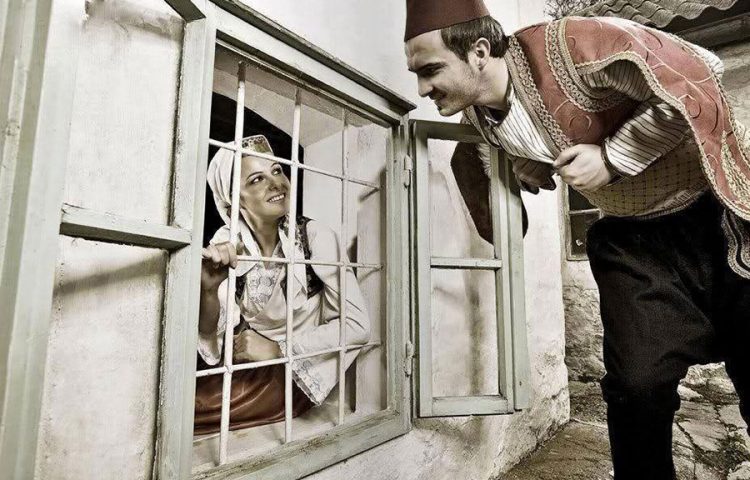Sevdalinka is a song of enormously high poetic, musical and historical value. It affirms the local cultural identity, is handed down from generation to generation and is a source of inspiration for interpersonal exchange. It represents a unique heritage of living tradition. It has been constantly renewed, interpreted, continues to this day and will continue to do so. She lives, that is important for UNESCO, on whose list she should rightly be included.
This was stressed by Vesna Isabegović, a graduate ethnologist of the East Bosnian Museum, who, together with the Tuzla Musicians’ Association, submitted an initiative to the UNESCO State Commission for the nomination of Sevdalinka as an immaterial cultural asset of national importance for the UNESCO list of immaterial cultural heritage.
The initiative was met and now follows a long and patient path to inclusion on the UNESCO list said Isabegović. Estimated it will certainly take a year.
“It is now necessary to draw up a list and an evaluation of the Sevdalinka, to provide evidence of its status and all this according to given criteria. Then everything should be sent to the international UNESCO commission so that they accept it or not,” she adds.
Legal regulations: Isabegović declares that in 2003 UNESCO adopted a Convention on the Conservation of Intangible Cultural Heritage, to which Bosnia-Herzegovina acceded in 2009, thus committing itself to adapt its own legal provisions.
“All signatory countries must ensure the preservation of the intangible heritage on their own territory, first and foremost identify it. The purpose of the Convention is to promote awareness and appreciation of the importance of intangible cultural heritage. There are two lists of the Convention… The Representative List of the Intangible Cultural Heritage of Humanity and the List of Intangible Cultural Heritage in Urgent Need of Preservation. Sevdalinka should be on the Representative List. She deserves to be there,” stressed Isabegović.
She reminded the audience that the Tuzla Musicians’ Association is organizing the Sevdalinka Festival for the ninth time and that workshops are held on-site each time to bring Sevdalinka closer to visitors and thus enhance its value.
“The convention stipulates that in this case, those who care for the cultural heritage can submit the association, proposals and be supported by professionals and institutions,” she adds.
Croatia, for example, has about ten immaterial cultural assets on the UNESCO list, including four from the music sector: Klapa singing, Istrian two-voice singing and Istrian scale, Bećarac singing, and Nijemo Kolo, a dance from Zagora.
Embroidery from Zmijanje: Bosnia-Herzegovina has only realised one project so far and so the traditional embroidery from Zmijanje was added to the list in 2014.
According to information from the UNESCO State Commission, last year there were two new proposals for inclusion on the UNESCO list: the woodcarving from Konjic and the harvesting of Iva grass on Mount Ozren, which are still in procedure.
Isabegović believes that it is important that Keranje be added to the list. This is a traditional technique for making lace, made with thread and sewing needle, with flower, animal, fruit and similar motifs.
“But Sevdalinka should be the first on the list. It is the best known traditional musical expression of these regions and deserves to be protected by UNESCO for a long time,” she added.
When asked what we gain from it, she replies that Sevdalinka would then be part of the immaterial heritage of humanity.
“The Intergovernmental Commission of UNESCO is responsible for providing aid in the form of professionals, staff training, infrastructure development, which is important for conservation and continuity. All in all, they provide both technical and financial assistance. It will then be easier to preserve Sevdalinka. Their protection, transmission and affirmation would also be ensured at the international level,” stresses Isabegović.
Preliminary lists: Biljana Čamur Veselinović, Secretary-General of the Bosnian UNESCO Commission, said that they would document the immaterial heritage and thus provisional lists with about 20 elements would have been drawn up, the completion of which would, of course, be possible. Even before that, the importance of the Sevdalinka on these lists had been recognised by the Ministry of Culture of the Federation.
“That is the condition for the nomination. The initiative of the Tuzla Musicians’ Association was discussed at the last meeting and received support. It is recommended that a team of experts be formed to prepare the nominations. Meetings of this commission will be scheduled and then the handover to the UNESCO bodies will follow”, explained Čamur Veselinović .
She stressed that they would support the inclusion of Sevdalinka on the UNESCO list, but that it would be important to maintain it in their own country and that we must ensure that it is transferred to new generations.
As reported from the city of Tuzla, Mayor Jasmin Imamović congratulated the members of the Musicians’ Association on the activities aimed at preserving the Sevdalinka and described it as one of the most important intangible assets within the cultural and historical heritage of Bosnia-Herzegovina.
It was announced that the 9th Sevdalinka Festival would be organized in April in Tuzla.
Public relations: As reported in the media, the Bosnian Sevdalinka interpreter Božo Vrećo will give a concert in the National Basilica of the Sacred Heart in Brussels on 24 February, precisely with the aim of including Sevdalinka as an immaterial cultural heritage on the UNESCO list.
The concert is one of the projects with which the non-profit artist association “Gratiartis” is working on the best possible performance of the Sevdalinka in Europe’s capital.
All European parliamentarians, commissioners and diplomats from Brussels were invited to the concert. The record company “Gratiartis” plans to organise a concert Božo Vrećo’s in the European Parliament in Brussels in the second half of the year and afterwards, a concert will be prepared in the UNESCO headquarters in Paris.
Vrećo said that he was honoured to perform in such a grandiose and wonderful building. They would all move forward courageously and energetically to ensure that Sevdalinka is protected by UNESCO as soon as possible as part of our intangible treasure of which we are proud.
About Sevdah
Sevdah is a term that characterizes a part of the Bosnian heritage, not only in music but also in the folk costumes, in the motifs of the house furnishings, in the emotions of Bosnian people. The word originates from the Arabic sawda, translated as black bile, matter associated with the feeling of melancholy, used in Arabic and Turkish culture.
Many Sevdalinka’s are about emotions: the sadness and melancholy that arise when a girl leaves her beloved and vice versa.
Sevdalinka is believed to have originated from the Ottoman conquest of medieval Bosnia.
The lyrics describe the lives of the people from the time when these songs were written. It is said that it is planned to sing Sevdalinka songs in the quiet garden behind the house or the traditionally furnished living room. Each song should truly be felt through the singing and the music, otherwise it would not be what it should be. Its authors are unknown because it comes from the people and has been passed down and formed over generations.
Outstanding performers
Some of the most outstanding Sevdalinka interpreters of the 20th century are: Nedeljko Bilkić, Himzo Polovina, Nedžad Salković, Zaim Imamović, Safet Isović, Safet Kafedžić, Husein Kurtagić, Beba Selimović, and Nada Mamula.
She had also sung Josipa Lisac (legendary Sevdalinka interpretation “Omerbeže”), Ibrica Jusić, Jadranka Stojaković, some of them also served as the basis for some songs of the singer-songwriter Džoni Štulić from Zagreb.
The ensemble “Mostar Sevdah Reunion” recorded a series of well-known Sevdalinka songs in a new version during the early 2000s.
Among the young Bosnian musicians who continue the Sevdah tradition are “Damir Imamović trio”, “Etnotrans”, “Urban sevdah band”…
Well-known songs are:
“A, što ćemo ljubav kriti”
“Čudna jada od Mostara grada”
“U Stambolu na Bosforu”
“Da je meni leći, umrijeti”
“Djevojka sokolu zulum učinila”
“Grana od bora pala kraj mora”
“Evo ovu rumen ružu”
“Zvijezda tjera mjeseca”
(Nezavisne.com, 29.01.2017)




